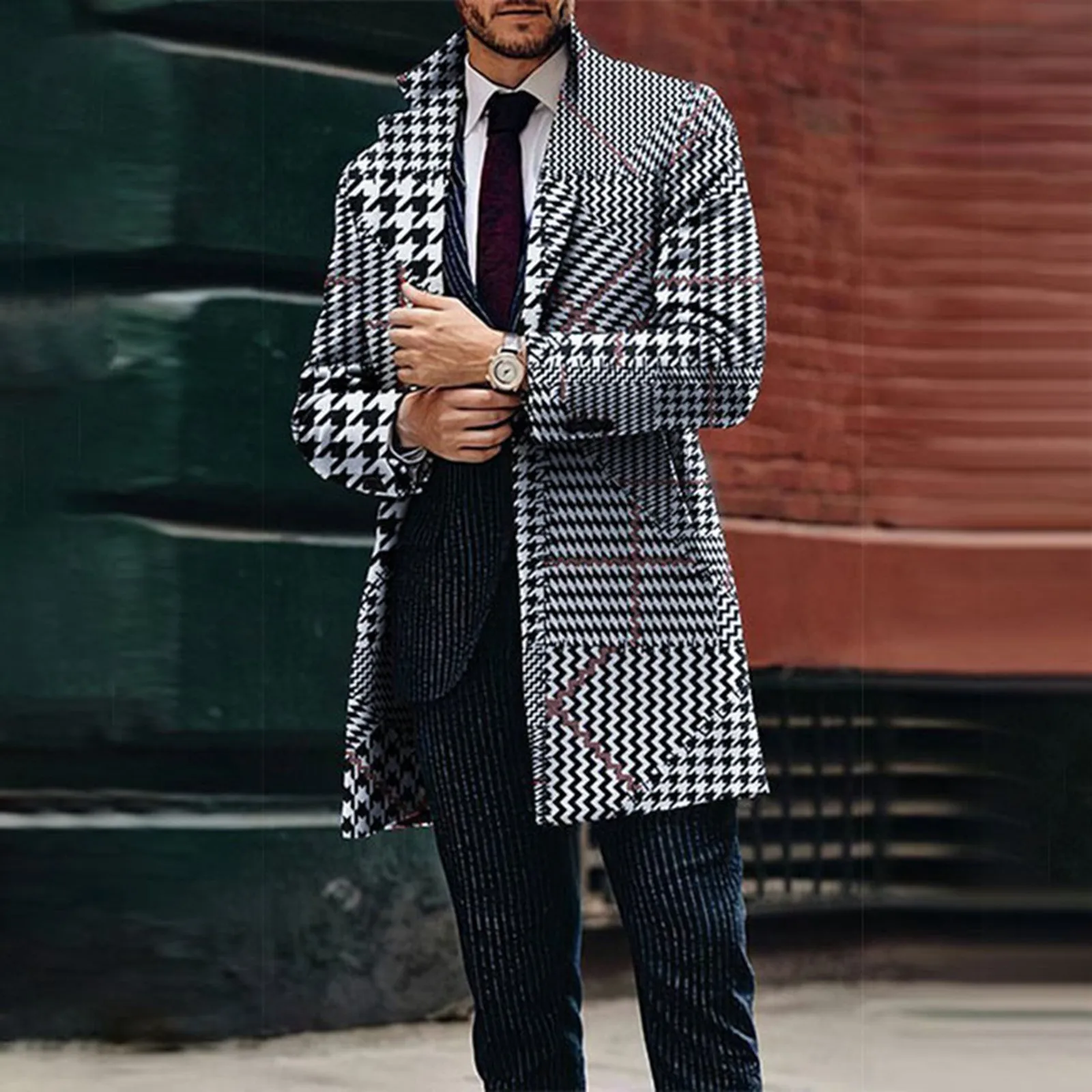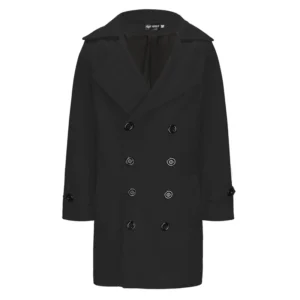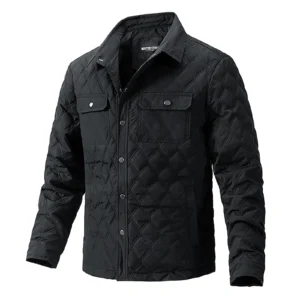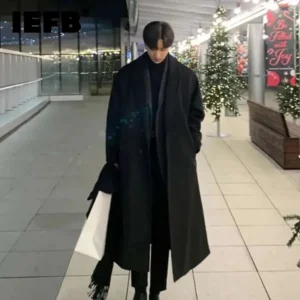Introduction: Understanding Men’s Dress Coats
When searching for formal outerwear, many men find themselves asking: “What exactly is a men’s dress coat called?” The simple answer is that most formal men’s outerwear falls under two main categories: overcoats and topcoats. However, the world of men’s dress coats extends far beyond these basic terms.
The terminology surrounding men’s formal outerwear can be confusing, with various styles having distinct names based on their design, history, and intended use. Whether you need something for business meetings, formal events, or colder winter occasions, understanding these differences helps you make more informed choices.
In this comprehensive guide, we’ll clarify the terminology for men’s formal and semi-formal outerwear, from classic overcoats to military-inspired designs. We’ll explore how choosing the right coat length impacts the overall formality and functionality of your outerwear, and help you understand the distinct characteristics that make each style unique.
What Makes a Coat a “Dress Coat”?
A “dress coat” isn’t simply any coat worn over formal attire—it’s a specific category of outerwear designed to complement and enhance formal and business wear. Understanding what qualifies as a dress coat helps distinguish it from more casual outerwear options.
Key characteristics that define a true dress coat include:
- Clean, structured silhouettes that maintain a formal appearance
- Premium materials like wool, cashmere, or high-quality blends
- Tailored fit that accommodates layering over suits without bulkiness
- Refined details such as horn buttons, quality stitching, and full linings
- Design elements that signal formality (lapel style, length, etc.)
These characteristics ensure the coat enhances rather than diminishes the formality of the outfit beneath. The men’s coat length guide provides essential information about how the proportions of your coat affect its formality—typically, longer coats are considered more formal than shorter styles.
Dress coats are designed with intention: they’re meant to be the final layer that completes a polished look rather than merely providing warmth. This fundamental distinction sets them apart from purely functional outerwear like parkas or casual jackets.
Overcoat: The Classic Formal Option
An overcoat represents the quintessential men’s dress coat. Defined by its substantial weight and length, the overcoat has been the standard for formal outerwear for centuries. This garment is specifically designed to be worn over suits and formal attire, making it an essential piece for professional and ceremonial occasions.
The classic overcoat features:
- Length: Traditionally extends to the knee or below, providing substantial coverage
- Weight: Constructed from heavier materials (20-30 oz. wool) for significant cold protection
- Materials: Premium wool (often Melton, cashmere, or wool blends)
- Construction: Either single or double-breasted, with substantial lapels
- Colors: Traditional options include navy, charcoal, black, and camel
The overcoat’s substantial construction serves both practical and aesthetic purposes. The heavier fabric drapes elegantly while providing superior insulation during colder months. The longer length not only offers better protection but signals formality—historically, longer coats have been associated with higher social status and formal occasions.
For those seeking classic elegance, our men’s overcoats collection offers timeless options that pair perfectly with formal attire. The structured shoulders and clean lines of a proper overcoat create a commanding silhouette that enhances any formal outfit beneath.
Topcoat: The Lighter Dress Coat Alternative
While often used interchangeably with “overcoat,” the topcoat is technically distinct. As its name suggests, the topcoat is lighter in weight and typically shorter than the traditional overcoat, making it ideal for milder conditions or transitional seasons.
Key differences between topcoats and overcoats include:
- Weight: Topcoats use lighter fabrics (typically 15-20 oz.), making them less bulky
- Length: Usually end just above or at the knee, rather than below
- Seasonality: Better suited for fall or spring, or milder winter climates
- Versatility: Often work well with both formal suits and business casual attire
- Materials: Lighter wool, gabardine, cashmere blends, or cotton blends
The lighter construction of a topcoat creates a sleeker silhouette that many men find more practical for everyday wear. While slightly less formal than a full-length overcoat, a well-tailored topcoat still maintains the necessary refinement for business and smart occasions.
For those seeking versatility without sacrificing style, our men’s topcoats collection features options that bridge the gap between formal elegance and practical functionality. The topcoat represents an excellent investment for men who need formal outerwear that doesn’t overwhelm their frame or feel too cumbersome for daily use.
Classic Formal Dress Coat Styles
Beyond the general categories of overcoats and topcoats lie several distinct traditional styles, each with unique characteristics and historical significance. These classic formal dress coat styles represent the height of men’s outerwear elegance.
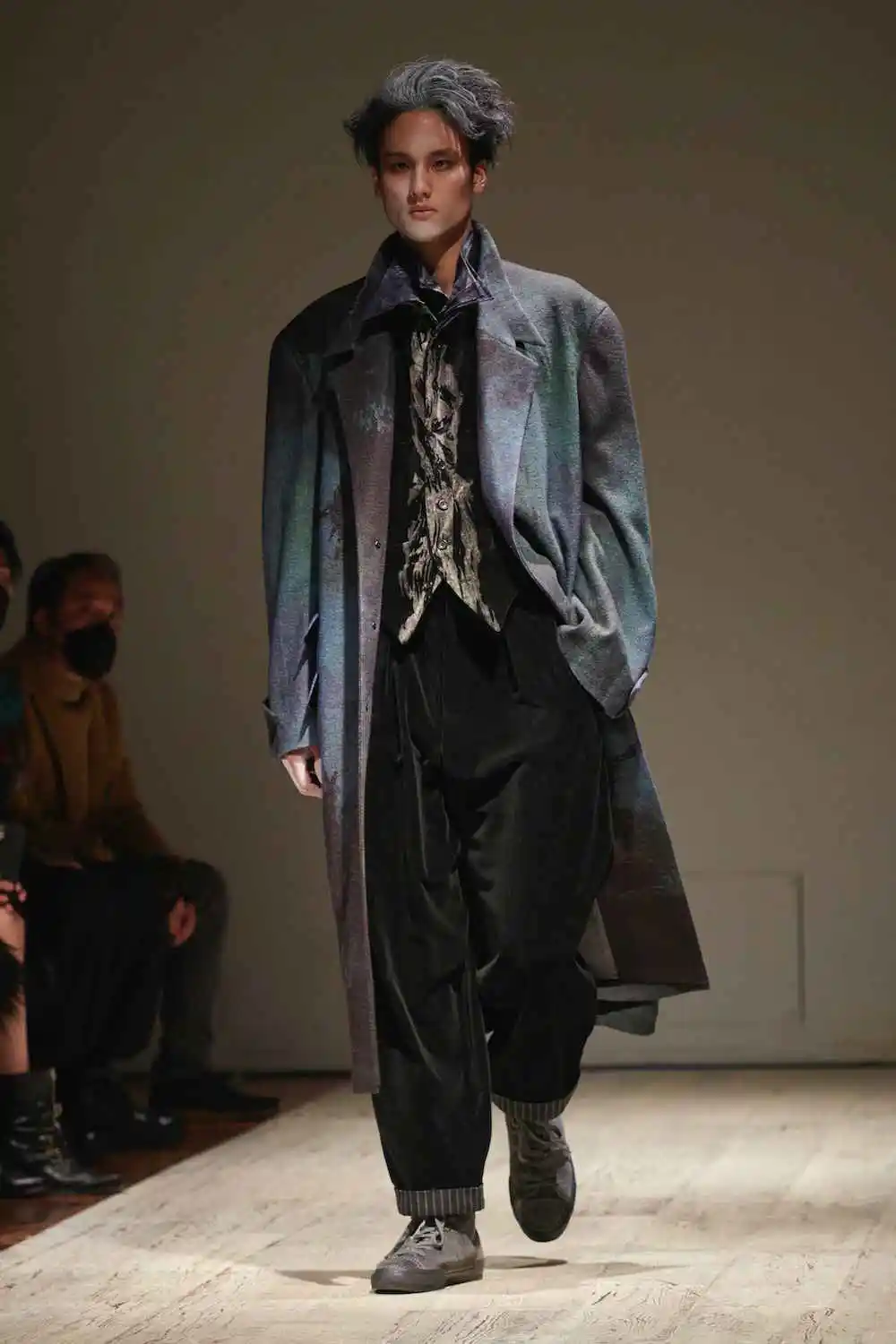
Chesterfield Coat
The Chesterfield coat represents one of the most enduring formal coat designs, dating back to the 1800s. Named after the Earl of Chesterfield, this elegant style features:
- A single-breasted design with a concealed fly front closure
- A distinctive velvet collar (typically in black or dark colors)
- Clean, minimalist lines without belt or back vent
- Medium to long length, traditionally falling below the knee
- Often made from herringbone, tweed, or solid dark wool
The Chesterfield’s refined appearance makes it exceptionally versatile for formal occasions. Its clean lines and subtle detailing allow it to complement rather than compete with the suit beneath, making it a favorite for business and formal evening events.
Paletot Coat
The Paletot is the epitome of formal dress coats, characterized by its:
- Fitted silhouette that follows body contours
- Double-breasted front with six buttons (typically arranged in a 6×2 pattern)
- Wide peak lapels that create an imposing chest presence
- Lack of a waist seam, creating clean vertical lines
- Formal fabrics like fine wool or cashmere in dark colors
The Paletot’s refined elegance makes it particularly suitable for the most formal occasions. Its aristocratic origins are evident in its commanding presence, making it an excellent choice for those seeking the most traditional and formal dress coat option.
Covert Coat
Originally designed for country gentlemen, the Covert coat has found its place in business and semi-formal settings due to its distinctive features:
- Single-breasted design with fly front and notch lapels
- Signature “railroading” stitching on cuffs and hem (four parallel rows of stitching)
- Shorter length (typically ending just above the knee)
- Often crafted from covert cloth (a dense, tight-woven twill)
- Traditional colors include tan, olive, and brown tones
The Covert coat balances formality with functionality, featuring details like a ticket pocket and sometimes a short rear vent for horseback riding. Today, it works beautifully over business suits while offering slightly more casual versatility than the Chesterfield.
Our men’s dress coat collection showcases various interpretations of these classic styles, each maintaining the essential characteristics while incorporating modern tailoring techniques for contemporary comfort.
Military-Inspired Dress Coats
Many of today’s most distinguished dress coats trace their lineage to military designs. These styles combine functionality with formality, offering practical features alongside refined appearance.
Greatcoat (Guards Coat)
The Greatcoat, or Guards Coat, originates from military uniforms and is characterized by:
- Dramatic full length (often reaching mid-calf or longer)
- Double-breasted design with 6-10 buttons
- Wide, substantial lapels and large collar for weather protection
- Heavy wool construction for maximum warmth
- Often features shoulder straps or epaulettes
The Greatcoat’s imposing silhouette creates a dramatic formal appearance. Its substantial weight and coverage make it particularly suited to the coldest conditions, while its military heritage lends it an authoritative presence appropriate for formal occasions.
Ulster Coat
The Ulster originated as a Victorian traveling coat and features:
- Cape collar or convertible high-buttoning storm collar
- Belted waist for shape and weather protection
- Often includes inverted box pleat in back for movement
- Substantial construction from tweed or heavy wool
- Typically falls to below the knee
The Ulster combines formality with exceptional weather protection, making it ideal for formal occasions in inclement conditions. Its distinctive collar and belt create a recognizable silhouette that balances functionality with refined appearance.
Trench Coat
Though military in origin, the trench coat has evolved into a versatile option that spans formality levels:
- Double-breasted front with wide lapels
- Belted waist with distinctive D-ring details
- Shoulder epaulettes and storm flap
- Traditionally made from water-resistant gabardine or cotton
- Mid-length (typically to just below the knee)
The trench coat’s versatility allows it to work with everything from formal suits to business casual attire. Its lightweight, weather-resistant construction makes it particularly suitable for rainy conditions while maintaining a refined appearance.
For guidance on selecting these military-inspired styles for formal settings, our guide to choosing the perfect dress coat for formal occasions provides detailed advice tailored to different formal contexts.
Versatile Smart-Casual Dress Coats
Some dress coat styles bridge the gap between formal and casual contexts, offering versatility for various dress codes and situations.
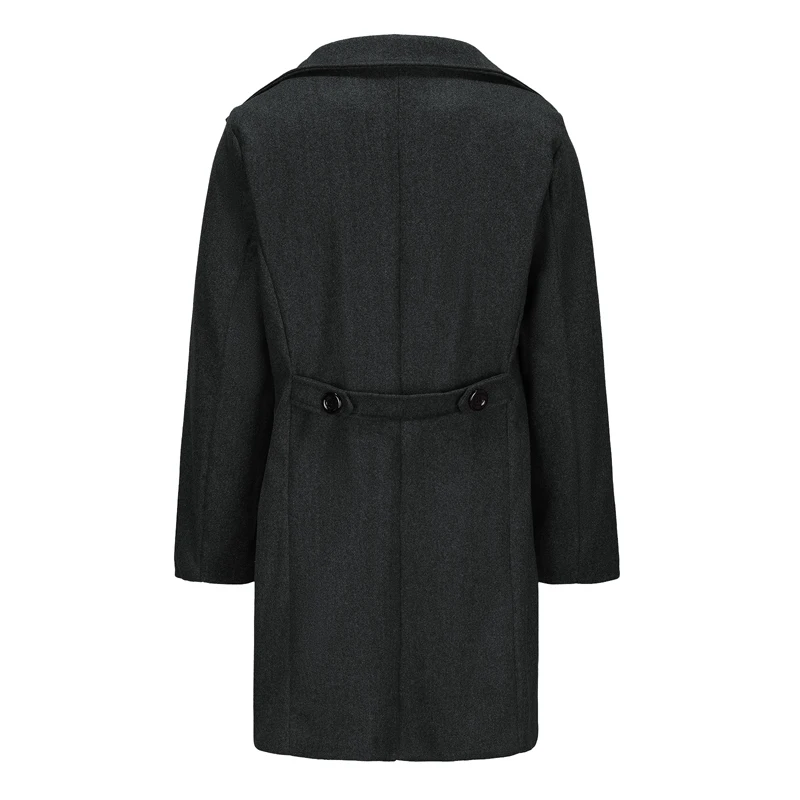
Polo Coat (Camel Coat)
The Polo coat originated on polo fields but evolved into a sophisticated dress coat option:
- Double-breasted design with patch pockets
- Belted waist for a defined silhouette
- Traditional camel color (from its original camel hair material)
- Half-back belt detail and set-in sleeves
- Mid-thigh to knee length
The Polo coat’s distinctive warm camel color creates a less severe alternative to traditional dark dress coats. This warmth, combined with its refined design, allows it to pair beautifully with both formal suits and more casual attire.
Pea Coat (Peacoat)
With naval origins, the pea coat has become a versatile option in men’s outerwear:
- Double-breasted front with large buttons (traditionally anchor-embossed)
- Broad lapels that can be turned up against the elements
- Shorter length (typically ending at hip or just below)
- Vertical or diagonal welt pockets
- Traditional navy blue heavy wool construction
While less formal than longer coat styles, a well-tailored pea coat works wonderfully with business casual attire and can even complement less formal suits. Its maritime heritage gives it a classic appeal that transcends mere trends.
Our men’s pea coats collection features refined interpretations of this versatile style, crafted to balance the coat’s naval heritage with contemporary tailoring for versatile wear.
Key Factors in Choosing the Right Dress Coat
Selecting the ideal dress coat involves considering several practical factors beyond just terminology:
Climate Considerations: Match your coat’s weight to your local winter conditions. Heavier wool overcoats for severe winters, lighter topcoats for milder climates.
Wardrobe Compatibility: Choose a coat color that complements your existing suit collection. Navy, charcoal, and black offer the most versatility with formal wear.
Body Type Considerations: Your physique should influence coat selection. Taller men can carry longer coats gracefully, while shorter men may find three-quarter length coats more flattering.
Construction Quality: Examine button attachment, pattern matching at seams, smooth lining installation, and even stitching as indicators of quality construction.
Practical Versatility: Consider how frequently you’ll wear the coat and in what contexts. More versatile styles may offer better value for those with varied wardrobe needs.
Understanding the differences between short versus long coats can significantly impact your selection process. Coat length affects not just appearance but also functionality in different weather conditions and formality levels.
Mens Double Breasted Pea Coat, Mens Wool Blend Coat, Mens Wool Pea Coat
Price range: $136.84 through $157.36 Select options This product has multiple variants. The options may be chosen on the product pageMens Cashmere Overcoat, Mens Hooded Winter Coat, Mens Wool Blend Coat
Price range: $128.72 through $139.68 Select options This product has multiple variants. The options may be chosen on the product pageMens Black Overcoat, Mens Black Wool Coat, Mens Wool Overcoat
$339.18 Select options This product has multiple variants. The options may be chosen on the product pageMens Double Breasted Pea Coat, Mens Hooded Winter Coat, Mens Quilted Coat
Price range: $81.00 through $108.48 Select options This product has multiple variants. The options may be chosen on the product pageMens Grey Overcoat, Mens Wool Blend Coat, Mens Wool Overcoat
$201.28 Select options This product has multiple variants. The options may be chosen on the product pageMens Herringbone Coat, Mens Long Overcoat, Mens Wool Overcoat
Price range: $197.16 through $203.69 Select options This product has multiple variants. The options may be chosen on the product page
The Perfect Fit: How a Dress Coat Should Wear
Regardless of style, a properly fitting dress coat makes the difference between refined elegance and sloppy appearance. Key fit considerations include:
Shoulders: The coat’s shoulder seams should align with your natural shoulders or extend just slightly beyond them to accommodate suit jackets underneath.
Sleeves: Sleeves should be long enough to cover your suit jacket sleeves, typically showing about ½ inch of shirt cuff when arms are extended.
Body: When buttoned, the coat should allow enough room for layering without excess fabric. You should be able to slide a flat hand between your chest and the buttoned coat comfortably.
Length: Traditional formal coats should fall somewhere between mid-thigh and knee, depending on the style and your height. The coat should cover your suit jacket completely.
Movement: You should be able to comfortably cross your arms and raise them to shoulder height without severe restriction or pulling.
For those interested in longer styles, our guide to men’s long overcoats for cold weather provides specific fitting advice for these more substantial garments.
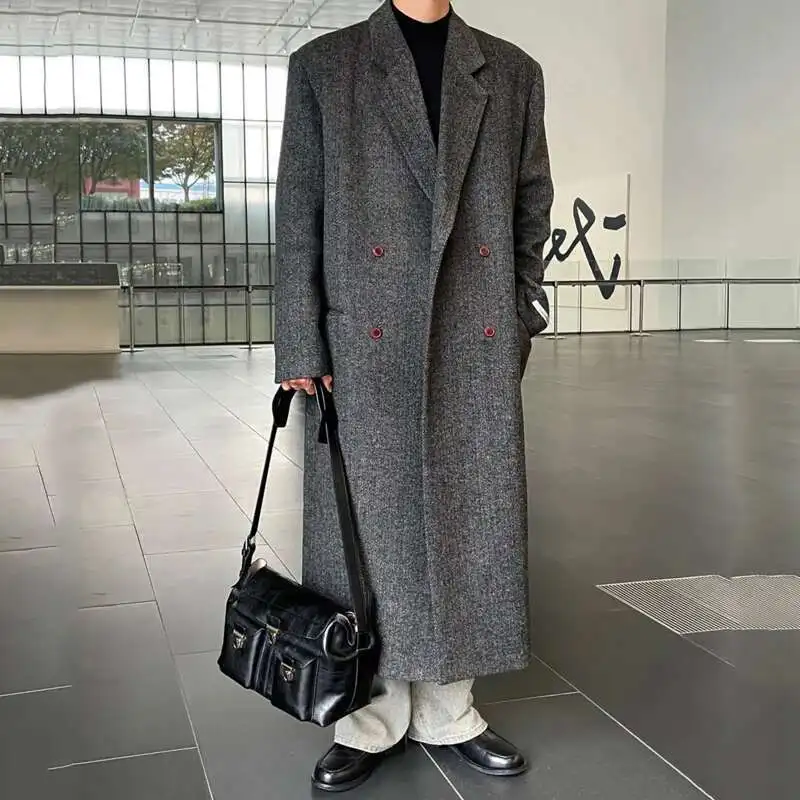
Frequently Asked Questions About Men’s Dress Coats
What’s the difference between a topcoat and an overcoat?
While similar in style, overcoats are made from heavier materials and typically extend below the knee, while topcoats use lighter fabrics and usually end at or above the knee. Overcoats are designed for colder conditions, while topcoats work better in milder temperatures.
Can I wear a pea coat with a suit?
Yes, a pea coat can work with less formal suits for business casual settings. However, for traditional business formal or black tie events, longer options like overcoats or topcoats are more appropriate.
How should I care for my wool dress coat?
Brush your wool coat regularly with a garment brush to remove surface dirt. Hang it on a sturdy, shaped hanger when not worn. Dry clean only when necessary (typically once per season), and allow the coat to air out after wearing before storing.
Are all trench coats considered dress coats?
Not necessarily. While traditional gabardine trench coats in neutral colors can function as dress coats, many modern trenches with casual details, bright colors, or unconventional materials are better suited for casual wear. The formality depends on material, color, and specific design details.
For additional information about selecting the right coat for winter conditions, our perfect winter coat length guide offers seasonal-specific advice.
Evolution of Men’s Dress Coat Styles
Men’s dress coat styles have evolved significantly while maintaining core elements of their original designs. Throughout history, changes in transportation, heating, and social customs have influenced coat styles, with modern versions typically featuring:
- Slimmer, more tailored silhouettes than their historical counterparts
- Lighter weight materials that maintain warmth while reducing bulk
- Subtle adaptations for contemporary proportions and lifestyles
Despite these changes, the fundamental elements that define each dress coat style remain remarkably consistent. The Chesterfield’s velvet collar, the trench coat’s epaulets, and the pea coat’s double-breasted front continue to signal each coat’s unique heritage.
Today’s interpretations balance tradition with modern needs, offering timeless elegance with contemporary comfort. The enduring nature of these classic styles demonstrates their fundamental design excellence—these are not merely fashion items but functional garments refined over generations to perfect both form and function.

